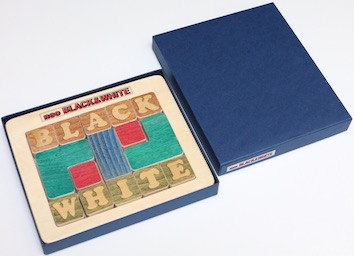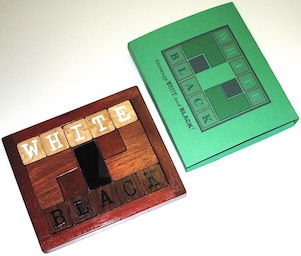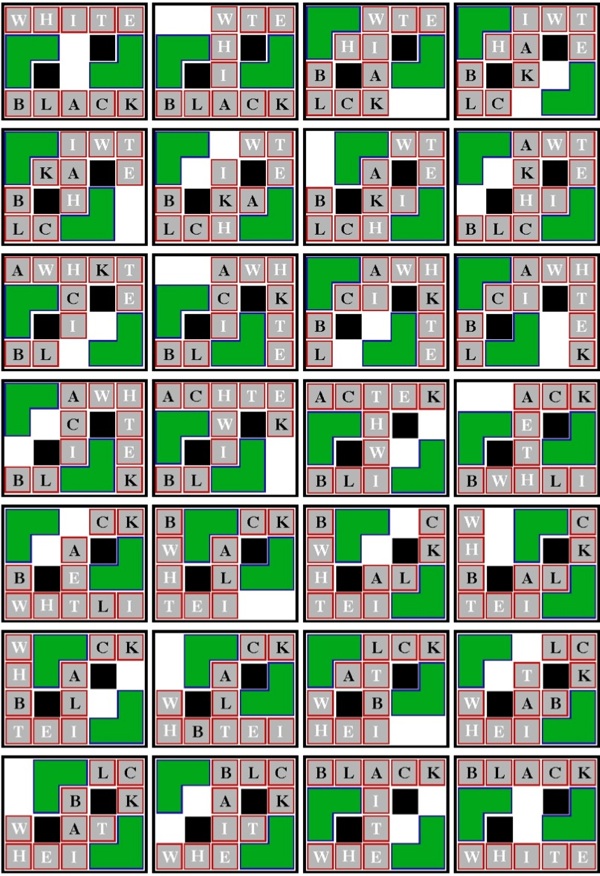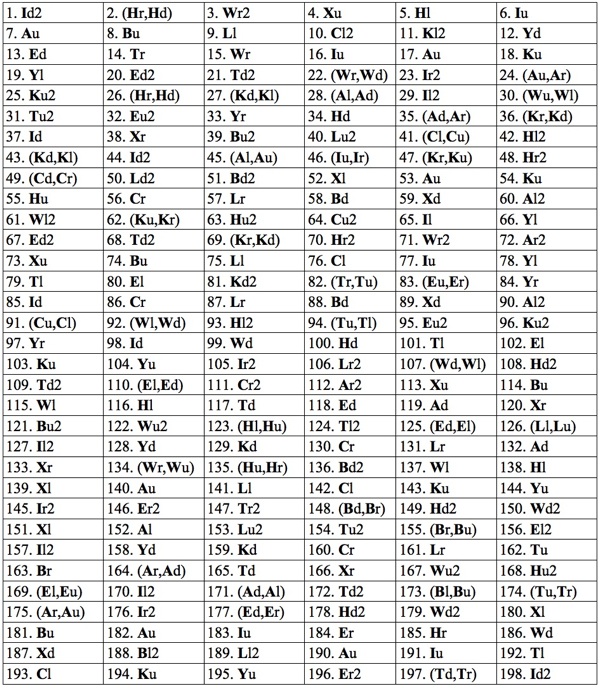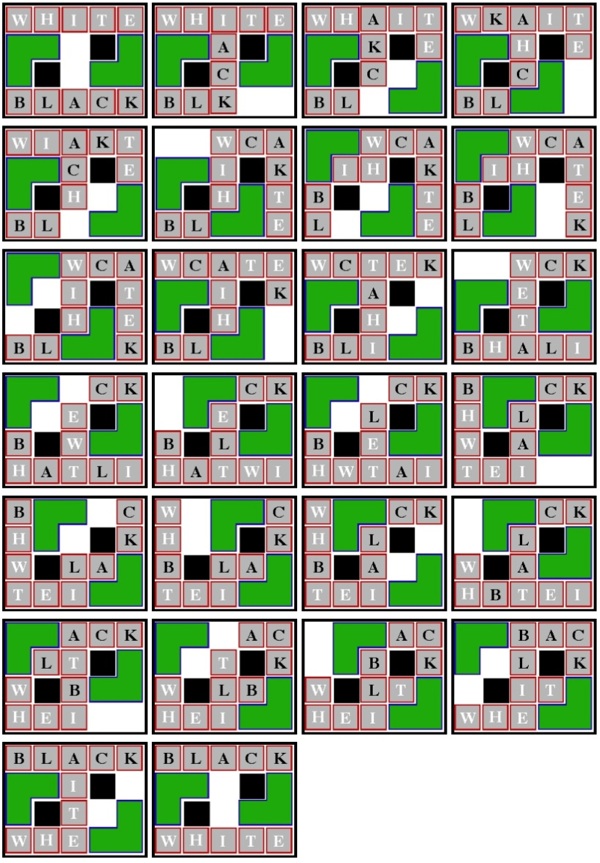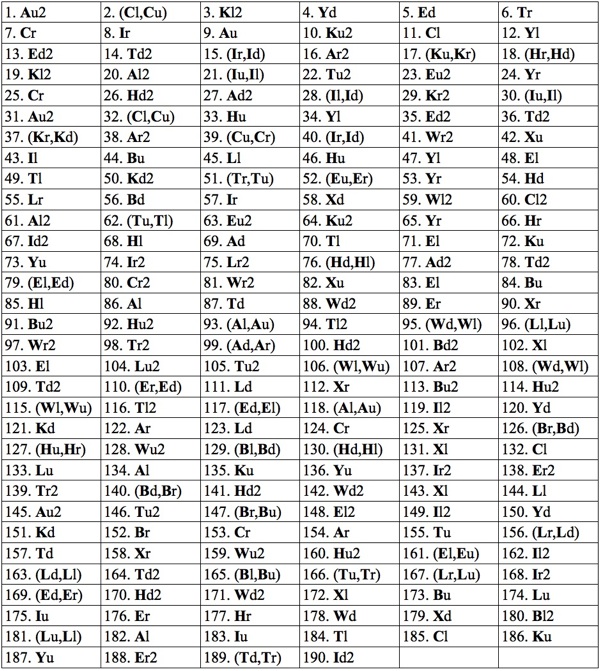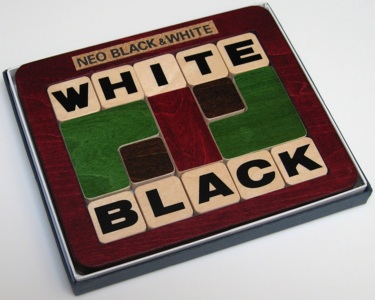
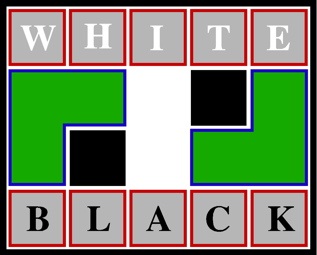
Designed and made by Minoru Abe 1985, directions in Japanese.
(cardboard box, wood tray, and 12 painted wood pieces, 5.25 by 6.25 by 3/4 inches)
The two blank 1x1 pieces are glued to the tray and cannot move. The center blank 2 by 1 keeper piece is removed to make the starting position shown on the right above. The goal is to slide the pieces so that BLACK is on top and WHITE is on the bottom.
Hordern's book shows 198 rectilinear (237 straight-line) moves and the Puzzler's Tribute book, in a chapter coauthored by Minoru Abe, shows 190 rectilinear (231 straight-line) moves.
